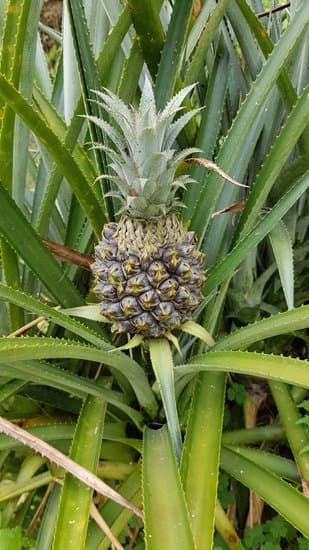Vertical gardening ideas for small spaces have become increasingly popular among urban dwellers looking to bring a touch of greenery into their limited living areas. With the rise of apartment living and smaller homes, vertical gardens offer a creative solution to maximize space while still enjoying the benefits of gardening. This article will explore the concept of vertical gardening and its many advantages for individuals with restricted outdoor areas.
When it comes to vertical gardening, the key is to utilize vertical space efficiently in order to create a flourishing garden in even the smallest of spaces. Whether you have a balcony, patio, or just a small corner in your home, vertical gardens can add beauty and life to your surroundings without taking up valuable floor space. By thinking outside the traditional garden box, you can discover innovative ways to grow your favorite plants, herbs, and flowers upwards.
Not only do vertical gardens provide aesthetic appeal, but they also offer practical benefits such as improved air quality, reduced stress levels, and even potential food production through growing herbs or vegetables. In addition to their environmental perks, vertical gardens can serve as a therapeutic hobby for those looking to connect with nature in an urban setting.
Stay tuned as we delve into tips on selecting the right location, creative design ideas, plant selection guidance, maintenance tips, DIY projects, maximizing space strategies, and inspiration galleries for creating your own stunning vertical garden oasis in a small space.
Choosing the Right Location
Vertical gardening is a fantastic solution for individuals with limited space who still want to indulge in their passion for cultivating plants. When it comes to choosing the right location for a vertical garden in a small space, there are several key tips to keep in mind.
Firstly, consider the amount of sunlight that the area receives throughout the day. Most plants require ample sunlight to thrive, so selecting a spot that gets at least 6 hours of sunlight is essential for successful vertical gardening.
Another important factor to consider when choosing the right location for your vertical garden is access to water. Make sure that your chosen spot is easily accessible to a water source, whether it’s a nearby hose or a watering can. Proper hydration is crucial for the health and vitality of your plants, so you must ensure they have easy access to water.
Additionally, take into account any potential obstacles or obstructions in the chosen location that may hinder the growth of your vertical garden. Ensure there are no overhanging branches, structures blocking sunlight, or other environmental factors that could negatively impact your plants’ growth. By carefully assessing and selecting the best spot for your vertical garden in a small space, you can set yourself up for success and enjoy a thriving garden filled with lush greenery and vibrant blooms.
Vertical Garden Designs
Vertical gardening is an innovative approach to cultivating plants in limited spaces that has gained popularity in recent years. For those looking to add some greenery to their small space, vertical garden designs offer a creative solution. There are various types of vertical gardens that can be implemented, such as trellises, hanging planters, and wall-mounted systems, each offering a unique aesthetic and functionality.
Trellises
Trellises are versatile structures that can be used to create a vertical garden by allowing plants to climb and grow upwards. These can be easily installed against a wall or fence, providing support for vine-like plants such as ivy, jasmine, or climbing roses. Trellises come in different materials like wood, metal, or plastic, allowing for customization based on the overall design aesthetic of the space.
Hanging Planters
Hanging planters are perfect for adding greenery while saving floor space in small areas. These can be suspended from ceilings or mounted on walls, creating a cascading effect with trailing plants like pothos, spider plants, or string of pearls. With a variety of shapes and sizes available in the market, hanging planters can easily complement any interior or exterior decor.
Wall-Mounted Systems
Wall-mounted systems are ideal for vertical gardening as they maximize space utilization by allowing plants to grow vertically along the walls. These systems often consist of modular panels with built-in planters that can be arranged in various configurations according to personal preference. Plants like succulents, herbs, or small flowers thrive well in these systems and provide a visually appealing display.
Incorporating these different types of vertical garden designs into your small space not only adds beauty but also brings nature indoors. Whether you opt for trellises, hanging planters or wall-mounted systems, there are endless opportunities to get creative and make the most out of your vertical gardening ideas for small spaces.
Plant Selection
When it comes to vertical gardening in small spaces, choosing the right plants is essential to ensure a successful and thriving garden. With limited space, selecting the appropriate plants that will thrive in a vertical environment is crucial. Here are some plant selection tips and options for herbs, vegetables, and flowers that work well in vertical gardens:
- Herbs: Herbs are perfect for vertical gardening due to their compact size and ability to thrive in containers. Some popular herbs that do well in vertical gardens include basil, mint, oregano, and parsley. These herbs not only add flavor to your dishes but also provide a fragrant and beautiful display when grown vertically.
- Vegetables: Vegetables can also be grown vertically in small spaces, providing a fresh supply of produce right at your fingertips. Consider planting cherry tomatoes, peppers, cucumbers, or lettuce in your vertical garden. These vegetables do not require a lot of space and can be easily trained to grow upwards on trellises or wall-mounted systems.
- Flowers: Adding flowers to your vertical garden can bring color and beauty to your small space. Opt for trailing flowers like petunias or nasturtiums that cascade down from hanging planters or wall-mounted pockets. Compact flowering plants like pansies or violas are also great choices for vertical gardening in small spaces.
By carefully selecting the right plants for your vertical garden based on their growth habits and light requirements, you can create a stunning and functional green oasis even in the smallest of areas. Remember to consider the amount of sunlight your vertical garden receives when choosing plants to ensure they thrive in their new home. Experiment with different combinations of herbs, vegetables, and flowers to create a diverse and visually appealing vertical garden that suits your taste and style.
Maintenance and Care
Vertical gardens in small spaces require specific care and maintenance to ensure the plants thrive in their limited environment. Watering is crucial for vertical gardens, as the structure can dry out quickly. It’s important to monitor the moisture levels regularly and adjust your watering schedule based on the plant’s needs. Consider installing a drip irrigation system or using self-watering planters to make this task easier.
Fertilizing is another essential aspect of caring for a vertical garden. Since nutrients can leach out of the containers more quickly in vertical setups, it’s vital to feed your plants regularly. Choose a high-quality liquid fertilizer and follow the instructions on the label to avoid over-fertilization, which can harm your plants.
Pruning is also important for vertical gardens to promote healthy growth and prevent overcrowding. Regularly inspect your plants for any dead or damaged leaves, flowers, or stems, and trim them as needed. Pruning will not only keep your garden looking tidy but also encourage new growth and flowering. With proper maintenance and care, your vertical garden in a small space will flourish and bring beauty to your home or outdoor area.
| Aspect | Tips |
|---|---|
| Watering | Monitor moisture levels regularly and adapt watering schedule accordingly |
| Fertilizing | Use high-quality liquid fertilizer following instructions to prevent over-fertilization |
| Pruning | Regularly prune dead or damaged parts of plants to promote healthy growth |
DIY Vertical Garden Projects
Vertical Pallet Garden
One creative and affordable way to create a vertical garden in a small space is by repurposing old wooden pallets. To start, find a sturdy pallet that is in good condition. Stand the pallet upright and add landscaping fabric or burlap to the back and bottom of each section, ensuring that the soil stays in place.
Then, fill each level with potting soil and plant your choice of herbs, flowers, or vegetables. Lean the pallet against a wall or fence for support, making sure it receives adequate sunlight throughout the day.
Hanging Gutter Garden
Another DIY vertical garden project that is perfect for small spaces is a hanging gutter garden. Start by purchasing metal gutters from your local hardware store and cutting them into smaller sections according to the desired length for your space. Drill holes on both ends of each gutter piece for drainage.
Hang the gutters horizontally using hooks or brackets at different heights, filling them with soil and planting your favorite plants inside. This clever design not only saves space but also provides excellent drainage for your plants.
Succulent Frame Display
For a modern and elegant look, consider creating a succulent frame display as part of your vertical gardening ideas for small spaces. Begin by building a wooden frame with compartments that are deep enough to hold succulents.
Fill each compartment with cactus potting mix and plant various types of colorful succulents in an arrangement that pleases you. Hang the frame on a sunlit wall or prop it up against an empty spot on your balcony – either way, this eye-catching display is sure to enhance the beauty of your small space while requiring minimal maintenance.
By following these step-by-step tutorials for DIY vertical garden projects using affordable materials like pallets, gutters, and frames, you can easily transform even the tiniest areas into lush green landscapes filled with your favorite plants. Get creative with different designs and tweak them according to your personal style to make the most out of limited space while adding visual interest and natural vibes to your living environment.
Maximizing Space
When it comes to vertical gardening ideas for small spaces, maximizing space is key to creating a lush and thriving garden. With limited square footage, utilizing vertical space becomes essential to ensure you can grow a variety of plants without taking up precious floor space. Here are some strategies to help you make the most out of your vertical gardening project:
- Utilize Wall-Mounted Planters: Wall-mounted planters are a great way to add greenery to your small space without sacrificing ground space. These planters can be hung on walls or fences, allowing you to grow a variety of plants vertically.
- Hang Planters from the Ceiling: To further maximize vertical space, consider hanging planters from the ceiling. This not only adds visual interest to your space but also creates more room for plants to thrive.
- Use Trellises and Arbors: Trellises and arbors not only provide support for climbing plants but also serve as decorative elements in your vertical garden. By using these structures, you can increase the planting area and create a stunning focal point in your small space.
In addition to these strategies, incorporating shelving units or tiered plant stands can also help you maximize vertical space in your small garden. These storage solutions allow you to stack pots and containers, providing ample room for multiple plants to grow upwards. Remember to consider the weight capacity of the shelves and ensure they are securely mounted to prevent accidents.
By implementing these strategies for maximizing vertical space in your small area, you can create a verdant oasis that thrives with an abundance of greenery. Whether you opt for wall-mounted planters, hanging baskets, or trellises, there are numerous ways to make the most out of limited space when it comes to vertical gardening. Get creative with your layout and design choices to craft a visually stunning garden that will leave visitors impressed with your ingenuity and green thumb skills.
Inspiration Gallery
Vertical gardening is a great way to maximize space and bring greenery into small areas. When it comes to creating a vertical garden in a limited space, there are numerous creative ideas and designs to explore. One popular option is the use of trellises, which provide support for climbing plants while adding visual interest to any vertical garden.
Hanging planters are another fantastic choice for small spaces, allowing you to display a variety of plants without taking up valuable floor space. Additionally, wall-mounted systems can be utilized to create a dynamic vertical garden that doubles as a piece of art on your wall.
In terms of plant selection for vertical gardening in small spaces, it is essential to choose plants that thrive in these conditions. Herbs like basil, mint, and parsley are excellent choices for vertical gardens, as they do well in containers and can add flavor to your meals.
Vegetables such as cherry tomatoes, peppers, and lettuces can also be successfully grown in vertical gardens. For those looking to add some color to their space, flowers like petunias, impatiens, and marigolds are excellent options for vertical gardening projects.
To ensure the success of your vertical garden in a small space, proper maintenance and care are crucial. Regular watering is essential for keeping your plants healthy and vibrant. Fertilizing appropriately will provide essential nutrients for optimal growth, while pruning helps control the size and shape of your plants. By following these maintenance tips and dedicating time to caring for your vertical garden regularly, you can enjoy a thriving green oasis even in the smallest of spaces.
| Benefits | Examples |
|---|---|
| Maximizing space | Trellises |
| Creative designs | Hanging planters |
| Beautiful aesthetic | Wall-mounted systems |
Conclusion
In conclusion, vertical gardening offers a practical solution for individuals with limited space who still desire to cultivate a thriving garden. By utilizing vertical space effectively, one can create a lush oasis even in the smallest of areas. The popularity of vertical gardening continues to grow as more people recognize its benefits in terms of aesthetics, accessibility, and productivity.
When considering embarking on your own vertical gardening project in a small space, it is crucial to keep in mind the importance of choosing the right location, selecting suitable plants, and implementing proper maintenance practices. Whether you opt for trellises, hanging planters, or wall-mounted systems, there are endless creative ideas to explore when designing your vertical garden.
So why wait? Armed with the knowledge and inspiration from this guide, it’s time to unleash your creativity and transform that small balcony, patio, or even indoor wall into a green paradise. With some DIY projects and strategic planning on maximizing space, you can enjoy the beauty and bounty of your very own vertical garden.
Start today and reap the rewards of fresh herbs, vibrant flowers, and homegrown vegetables right at your fingertips. Vertical gardening truly provides endless possibilities for turning any confined area into a flourishing oasis.
Frequently Asked Questions
What Grows Best in a Vertical Garden?
Vertical gardens are versatile and can accommodate a variety of plants, but some types thrive better than others in this environment. Plants like succulents, herbs, ferns, and even some vegetables such as lettuce or cherry tomatoes do well in vertical gardens due to their shallow root systems and adaptability to different growing conditions.
How Do You Make a Mini Vertical Garden?
Creating a mini vertical garden can be a fun and rewarding project. To make one, you will need a small structure like a wooden frame or pallet, some pots or planters, potting mix, and the plants you wish to grow. Arrange the pots vertically on the structure, ensuring they have proper drainage and sunlight exposure for optimal growth.
How Do You Arrange a Vertical Garden?
When arranging a vertical garden, consider factors like the size of the plants, their light requirements, and their watering needs. Start by placing larger plants at the bottom of the structure and smaller ones at the top to ensure all plants receive adequate sunlight.
Additionally, group plants with similar watering needs together to make maintenance easier. Be creative with your arrangement to create an aesthetically pleasing display while ensuring each plant has room to grow.

Welcome to my gardening blog! I am passionate about plants and enjoy sharing my knowledge and experiences with others. In this blog, I will write about everything related to gardening, from tips on how to get started to updates on my own garden projects.





